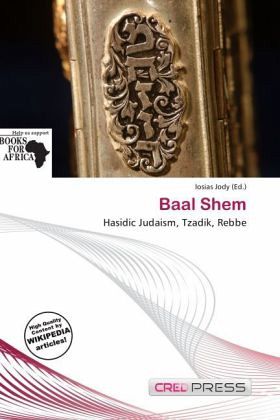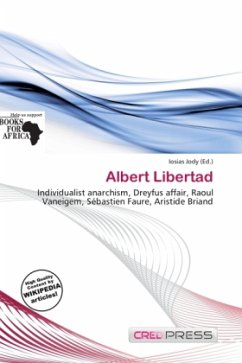
Baal Shem
Hasidic Judaism, Tzadik, Rebbe
Herausgegeben: Jody, Iosias
Versandkostenfrei!
Versandfertig in 6-10 Tagen
32,99 €
inkl. MwSt.

PAYBACK Punkte
16 °P sammeln!
Please note that the content of this book primarily consists of articles available from Wikipedia or other free sources online. The traditional Baal Shem healer and exorcist used Kabbalistic methods in sanctity.cite_ref-0[1] Nistarim mystical brotherhoods sought wider outreach, from which Hasidism emerged. The early life of Israel Baal Shem Tov (1698 1760) was a Baal Shem, before introducing the leadership role of the Hasidic Tzadik and new mystical interpretation, replacing the earlier Baal Shem] Baal Shem in Hebrew translates as "Master of the Name", and is often used in reference to Israel ...
Please note that the content of this book primarily consists of articles available from Wikipedia or other free sources online. The traditional Baal Shem healer and exorcist used Kabbalistic methods in sanctity.cite_ref-0[1] Nistarim mystical brotherhoods sought wider outreach, from which Hasidism emerged. The early life of Israel Baal Shem Tov (1698 1760) was a Baal Shem, before introducing the leadership role of the Hasidic Tzadik and new mystical interpretation, replacing the earlier Baal Shem] Baal Shem in Hebrew translates as "Master of the Name", and is often used in reference to Israel ben Eliezer (1698 1760) due to his renown, the Rabbi who founded Hasidic Judaism in Eastern Europe and became titled the Baal Shem Tov. However, this connotation is misleading. The Baal Shem Tov started public life as a traditional Baal Shem practical mystic, but with his founding of Hasidism, introduced a different, new way into mystical thought and practice. The new Hasidic Tzadik-Rebbe replaced the Baal Shem, by combining elite mystic with public Maggid role, teaching the innate mystical connection of the common folk, through the Divine channel of the Tzadik.












